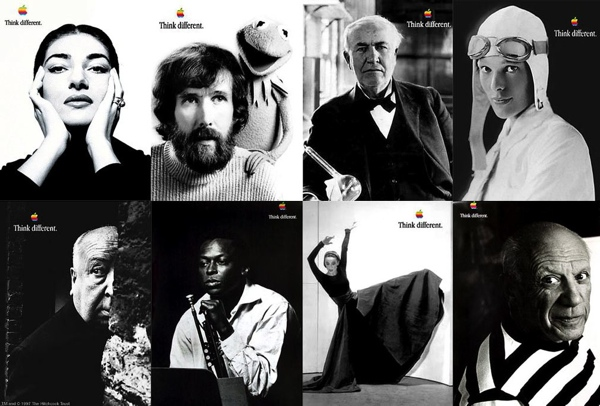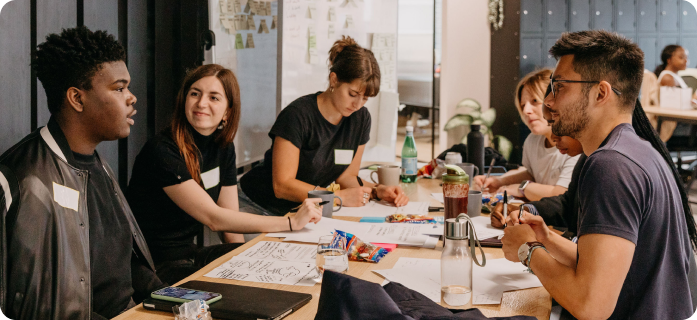The Power of Storytelling
If you work within the creative industries, storytelling should be considered an important part of your skillset for the future. It is a versatile and valuable skill that can be applied to many areas of work. It can help to build stronger connections with audiences, inspire innovation, and drive business success.
Storytelling continues to be a powerful tool for designers, entrepreneurs, and creatives. When used well, it allows you to connect with your target audience on an emotional level, communicate your company values and mission, and differentiate your product from competitors. But why is storytelling so important, and how can you improve your storytelling skills?
Let’s start at the beginning. Storytelling, broken down simply, is the art of creating and sharing a narrative, or even more simply, a story. It is a way to communicate information, ideas, or experiences to an audience in an engaging and relatable way. Storytelling can take many forms, including written stories, oral stories, and visual stories, such as those we see in today’s popular film and television series. The purpose of storytelling can vary, it can be used to entertain, educate, persuade, or simply share the vision of an experience.

Storytelling, pitching and crafting engaging presentations remain a core element of the Experience Haus curriculum across all of our courses.
Storytelling has been used for centuries as a means of passing down history and knowledge, and connecting people with one another. In modern times, storytelling is also used in many areas such as marketing, advertising, and entertainment, and in the experience design world, it can be used for internal communications, pitching and landing pages across the web.
We all enjoy a good story. We want to see the story through to a successful ending. Stories capture our attention, evoke emotional output, and create a sense of connection with those involved. In the same way, stories can help make a deeper connection between your brand and your audience. By sharing the inspiration behind your product or design, you can give your audience a glimpse into your creative thinking and process, and in turn, create a sense of community and belonging.
But storytelling isn’t just about sharing your story, it’s also about understanding your audience’s story. As a designer or creative, it’s important to understand the needs and wants of your target audience, and to craft your story in a way that resonates with them. By understanding your audience’s story, you can create a design or product that truly meets their needs and stands out from competitors.
Now let’s move into how a story comes together. There are numerous ways you can create a story arc, but a good story typically has a clear structure, with a beginning, middle, and end. It should have a central conflict or problem that is resolved by the end of the story. Additionally, a good story should have well-developed characters, descriptive language, and the ability to evoke emotions in the audience. Using descriptive language can help to create vivid imagery and bring the story to life for the audience. This can be done by using specific nouns, verbs, and adjectives, as well as by including sensory details. Additionally, using metaphors and similes can also help to create a more engaging story.

A great example of this is Apple’s “Think Different” campaign, which ran from 1997 to 2002. This campaign used storytelling to position Apple early on as a company that stands for creativity and innovation. The ads that were run featured photos of famous thinkers and innovators, accompanied by a voiceover that said, “Here’s to the crazy ones. The misfits. The rebels. The troublemakers. The round pegs in the square holes. The ones who see things differently.” This campaign helped to re-position Apple to eventually become the global leader in the tech industry it is today.
Storytelling should be considered an important part of your skillset for the future – so what are some top tips for designers or design teams needing to improve their storytelling?
Understand your audience: To create an effective story, it’s important to understand your audience’s needs and wants. As part of the process, know you are trying to convey your message to, Conduct user research to learn more and use this information to craft a story that resonates directly with them. Evoking emotions in the audience is key to creating a connection with them. To do this, it’s important to understand the emotions you want to evoke and to craft your story in a way that will elicit those emotions. This can be done through descriptive language, character development, and by using techniques such as foreshadowing and suspense. Share what you have learned with the rest of your design team. By sharing stories of people who have overcome challenges, or of new and exciting ways of doing things, you can inspire your team to think differently and come up with new and innovative ideas.
Use storytelling throughout the design process: Incorporate storytelling throughout your design process (we’ll talk about user testing in the next point). Use stories from your audience to inspire design decisions, drive innovation, test ideas and communicate early design concepts to key stakeholders. Storytelling can help in problem-solving by providing authentic contextual understanding and perspective. It can be used to describe a problem, impact, how it was identified, and how it was eventually solved.
Use user testing to finesse your storytelling: Use storytelling as a tool to understand your user’s product experience. Encourage your users to share their stories about how they interact with your product (you could ask for descriptive reviews) and use this information to improve the design. In today’s increasingly competitive landscape, being able to differentiate your brand or product is necessary, not just essential. Storytelling can be used to create a unique and compelling narrative that sets you apart from all of your competitors. A/B testing is a great way to optimise your stories. Test different versions of the proposed story with current users and use the feedback to refine the story before moving forward in the design process.
Collaborate with other team members: Storytelling is not a one-person job. Encourage collaboration between team members, and gather input from different departments to co-create a more comprehensive and cohesive story. Storytelling remains a powerful tool for communication for design teams as a whole. It helps to convey so many types of information in a way that is relatable and engaging, making it more likely that the audience will retain the information and take action off it.
Use different mediums to tell the story: Don’t limit yourself to just one medium to tell your story. It’s not uncommon to try and put an entire story into a presentation slide deck. Use different mediums such as videos, images, and animations to bring your story to life in a more engaging way. Explore including these where possible. Storytelling requires creativity, which is highly valued in today’s fast-paced and ever-changing creative economy. With storytelling, individual designers and design teams can think outside the box, come up with new ideas, and create highly memorable experiences for the audience. Leave the audience wanting more.
Finally, like any skill, storytelling takes practice. Take time to study different storytelling techniques, and try out different approaches in your design work. The more you practice, the better you will become at crafting compelling stories that stick. And once you’ve mastered the art of storytelling, add this to part of your growing leadership skillset.
Storytelling can be used to inspire and motivate teams, communicate a vision, and build trust and alignment within an entire organisation.



